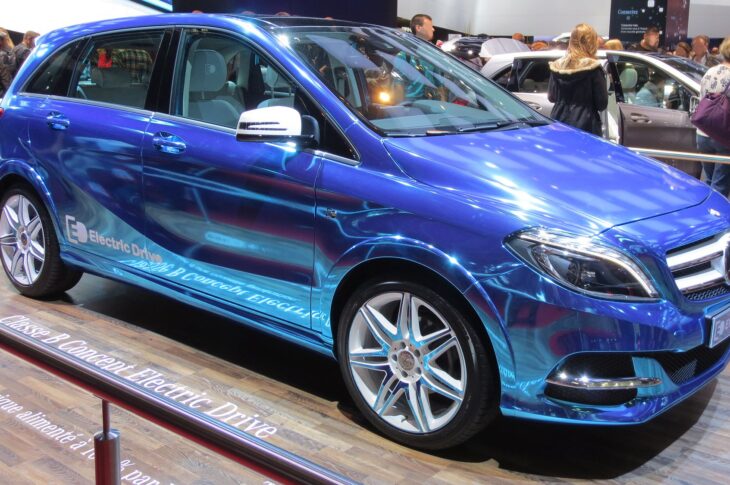Mercedes-Benz and Sila Achieve Breakthrough With High Silicon Automotive Battery
Mercedes-Benz is taking a big leap forward in the creation of the world’s most desirable electric cars. They have recently announced a collaboration with Sila, a cutting-edge battery materials company. For the first time, Mercedes-Benz will incorporate Sila’s silicon anode chemistry in batteries in the upcoming electric G-Class model. This innovative addition to the Mercedes-Benz battery portfolio bolsters the energy density of the batteries without compromising safety or other performance factors.

Compared to other commercially available cells of a similar size, Sila’s technology offers a significant energy density increase of 20-40%, reaching more than 800 Wh/l at cell level. This will allow Mercedes-Benz to store more energy in the same space, greatly increasing the range of their future vehicles.
Sila will be producing the advanced silicon anode materials using 100% renewable energy at their new facility in Washington state. Mercedes-Benz is proud to be Sila’s first publicly announced automotive customer from this facility. The two companies aim to have the range-extended version of the electric G-Class equipped with this new battery technology by mid-decade.
Mercedes-Benz initially invested in Sila in 2019 as part of their research and development into advanced batteries for their future electric vehicles. This supply agreement, announced today, is the logical progression of this partnership and underlines Mercedes-Benz’s ambition to lead the electric vehicle manufacturing industry.
“Sila has come a long way since we established our strategic partnership in 2019. They have been proving their ability to not only deliver scientific innovation at the highest level, but also their ability to manufacture high quality material. We’re glad that in Sila we have a leading partner who will help us power our future generation of electric luxury vehicles with their highly innovative anode technology. Delivering such a high energy density is a true game changer and allows us to think in completely new directions when developing future electric cars. Our partnership with Sila is another essential step on our way to build the most desirable electric luxury cars,” said Markus Schäfer, Member of the Board of Management of Mercedes-Benz Group AG, Chief Technology Officer, responsible for Development and Procurement.
“We’re focused on delivering materials that are cost-efficient and capable of delivering on the promise of electric vehicles, working to ensure longer range energy, improved charge times, and lowering battery cost per kWh. To realize the potential of next-generation materials, scale up is a pivotal part of execution and we’ve been building towards automotive quality standards and scale since our start. With our new plant in Washington, we’re ensuring we can meet the requirements of our auto partners like Mercedes-Benz as they transition to a fully electric future,” said Gene Berdichevsky, Co-founder and CEO, Sila.
Sila Nanotechnologies is not just a supplier, but a partner committed to enhancing all aspects of battery performance. By producing quality-controlled silicon anode materials at scale, they ensure that every battery that rolls off their production line is capable of meeting and exceeding customer expectations. Shipping products that not only meet their goals but also adhere strictly to safety requirements is a priority for Sila.
The success of Sila’s silicon anode technology is the culmination of a decade-long research and development journey, featuring over 55,000 iterations. The team’s determination and innovation enabled them to be the first to industrialise and make commercially available a next-generation lithium-ion chemistry with significantly higher energy density.
This breakthrough will be instrumental in powering future Mercedes-Benz electric vehicles, allowing them to travel greater distances on a single charge and offer a more sustainable, efficient method of transportation. This collaboration is a testament to both the advanced capabilities of Sila’s technology and Mercedes-Benz’s forward-thinking approach to vehicle design.

